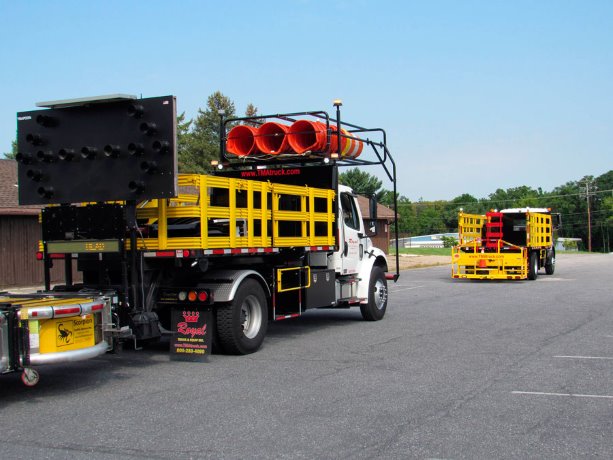Truck mounted attenuator (TMA) vehicles are designed to protect construction workers from incoming traffic.
Problem is, even getting the crash trucks into place can be a risky proposition for drivers. U.S.-based Kratos Defense and Security Solutions has leveraged its autonomous military vehicle technology and married it to a TMA to create the world’s first Autonomous TMA (ATMA).
"I conceived the idea at a Florida commercial event while I was demonstrating our vehicle automation retrofit product, the Multi-Platform Applique Kit (M-PAK) that we developed for military applications," says Maynard Factor, director of business development at Micro Systems Inc., a wholly owned subsidiary of Kratos.
"A representative from the Florida Department of Transportation was talking about the idea of building a robotic crash attenuation vehicle from the ground up. I did some digging and realized it made perfect sense to adapt existing vehicles to ultimately remove a human from this unsafe and dangerous job in an effort to create a safer work zone at a much lower cost than building a brand new model."
The M-PAK system includes a vehicle control module; actuators for controlling steering, braking and acceleration; a transmission controller; a radio transceiver; and a navigation module.
A leader vehicle with a driver moves into position while transmitting velocity, heading and position information in packets of data known as "eCrumbs" to the driverless follower vehicle over a dedicated radio link. The transmitted eCrumbs allow the follower vehicle to mimic the leader’s vehicle precisely using GPS data. The space between the leader and follower vehicle can be adjusted, depending on vehicle speed and function.
"Kratos has historically been in the defence industry and we really had no experience in the road construction industry," says Factor.
"We needed a partner and I found Royal Truck and Equipment, which is the world’s largest manufacturer of TMA trucks. I noticed that their trucks had an enormous amount of technology on the vehicle related to cone distribution and retrieval, radar systems, camera and video recording systems, and high-tech crash attenuators, all revolving around work zone safety through utilization of technology. That made them the perfect partner. They agreed to send us a truck that we could automate using M-PAK."
Once the M-PAK system is installed, an operator can manually drive the ATMA to the designated work zone, power on the automation system and exit the vehicle. From there the driver of the leader vehicle performs the routine as normal and the ATMA follows.
Royal currently offers and promotes the ATMA in a baseline configuration. However, customers have generally asked for the product to be tailored to their particular needs. For example, in North America TMAs typically fall further back as the speed of surrounding traffic increases. Not so in the U.K., where following distance is reduced as speed increases. That’s because operators worry that passenger vehicles will try to pass the ATMA and situate themselves directly behind the lead vehicle.
However, regulations haven’t fully encompassed the notion of driverless crash trucks.
"These regulations are more relaxed in the U.K. and Europe, but are still something of a challenge in the U.S.," says Factor.
"This is just something we are working through as are all unmanned ground vehicle companies including Tesla, Google and Uber. We actually have a system that is ready to deploy this year in the U.K., which has more lenient legislation with regards to unmanned systems on public roadways."
Factor envisions a world of automated road construction vehicles and support equipment from crash trucks to road painting vehicles, sweeper trucks, water trucks, grinders, traffic cone distribution and pickup vehicles and asphalt rollers.
"The system is extremely versatile," he says.
"Right now, we’re looking for partners for a North American road demonstration project that will prove its value."







Recent Comments
comments for this post are closed